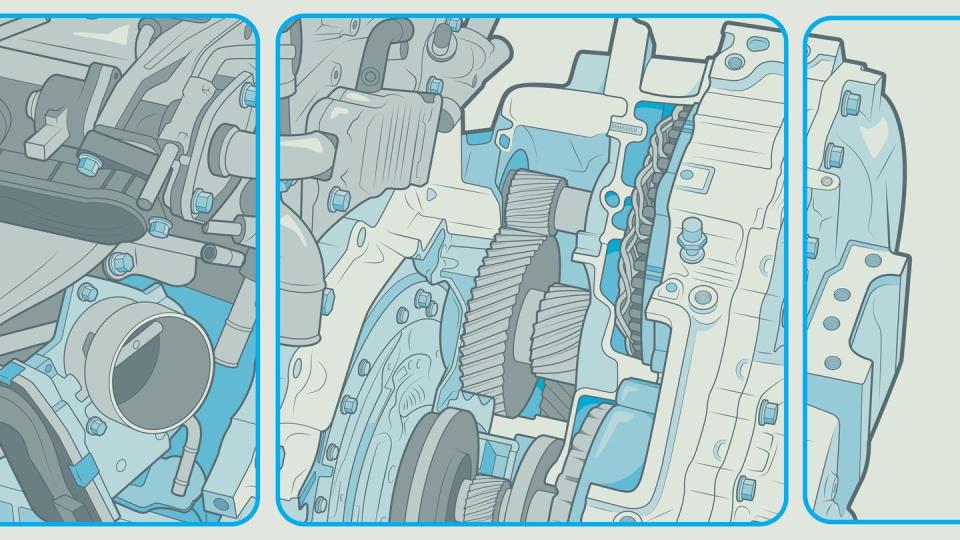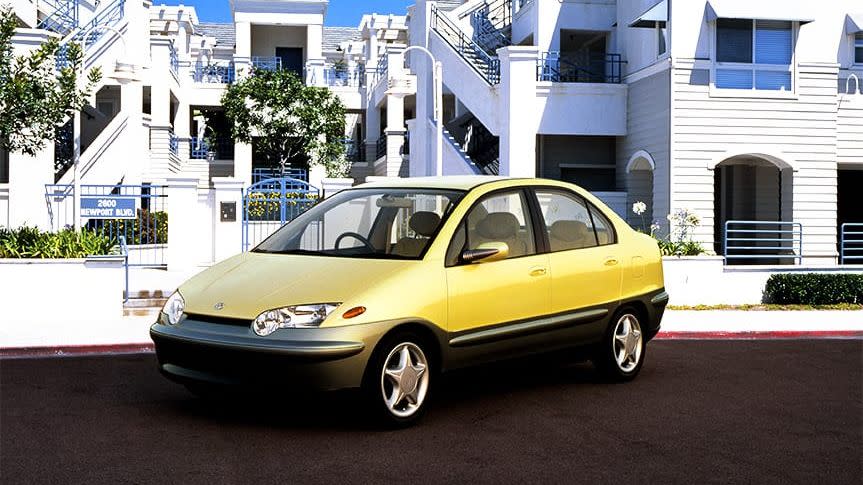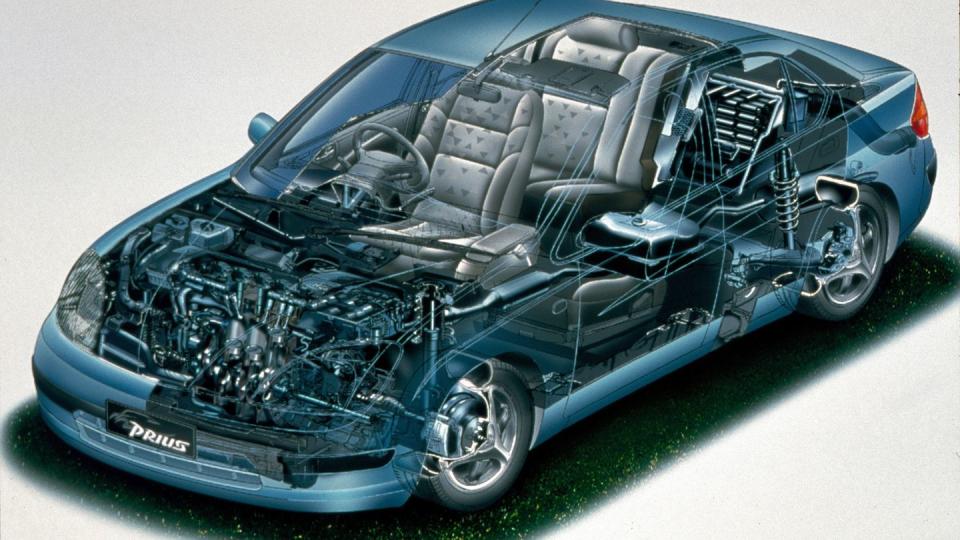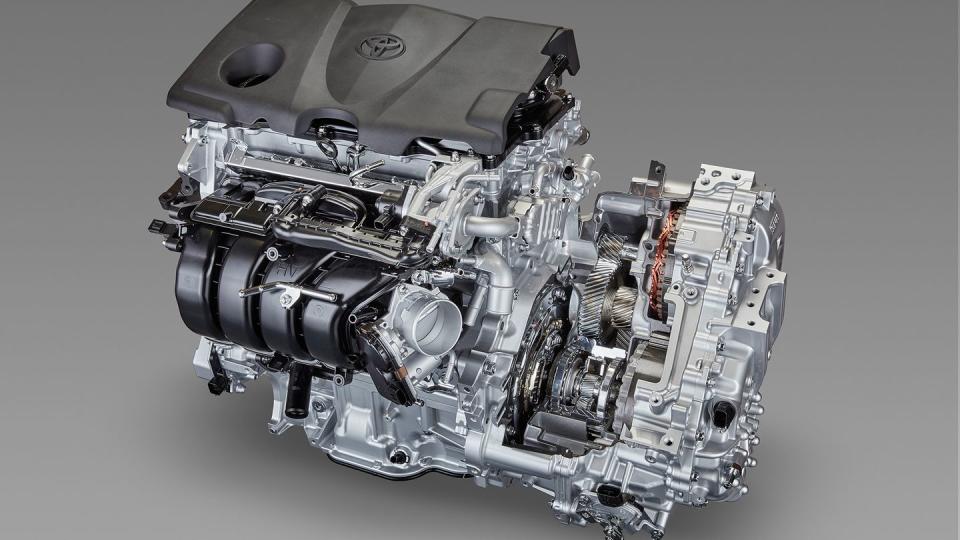The Crucial Tech That Made Toyota’s Hybrid Revolution Possible

These days, the Toyota Hybrid System doesn't get a lot of love. With our rapid move towards electrification, much more emphasis has been placed on full battery-electric vehicles (BEVs) and to a lesser extent, plug-in hybrid electric vehicles (PHEVs). Hell, in America, you can get a tax credit on a number of BEVs and PHEVs, but not any conventional hybrids. Toyota's hybrid system is old news, though there's a case to be made for its future.
Toyota started working on gas-turbine hybrids back in the Sixties, eventually presenting its work in a special Century prototype in 1975 and a version of the Sports 800 in 1977. The gas-turbine hybrid project continued into the Eighties, with the automaker presenting a Gas Turbine Vehicle (GTV) concept at the 1987 Tokyo Motor Show. But the gas-turbine hybrid was eventually deemed unfeasible, and Toyota discontinued work.

In 1993, Toyota began work on what it called its G21 project, a vehicle for the 21st century. The 1993 Toyko Motor Show, the first held after Japan's asset-price bubble burst, placed a heavy emphasis on economical and clean cars. It was a step away from the heady days of twin-turbo Supras and RX-7s, reduced in scale but not ambition. The G21's team aim was to build an internal-combustion car with double the fuel efficiency of a conventional model, and while the initial plan was to create a pure concept car with a hybrid drivetrain, the company soon decided to move forward with a hybrid production car. The Prius concept of 1995 showed where Toyota was headed, though the car used a very different hybrid system than what ended up in production. It featured a direct-injection four-cylinder paired with a continuously variable transmission (CVT) and a single motor-generator unit. Instead of a battery, the Prius concept utilized a capacitor for energy storage—something Toyota revived for the TS030 and TS040 LMP1 cars of the 2010s.
While the show car was in progress, the G21 team was also hard at work on what would become the production Prius in 1997. The production version of the system ditched the concept's capacitor for a nickel-metal-hydride battery and did away with the conventional transmission entirely. Instead, Toyota devised a novel system with two motor-generator units.

"We studied various systems for about six months from the end of 1994, before deciding that the two-motor type was the best option because of the high fuel efficiency potential," said longtime Prius engineer Satoshi Ogiso in a Toyota-published story celebrating the car's 20th anniversary. "We assumed that power electronics (semiconductors and electronic circuits used to efficiently control power) would make leaps in the near future. There was a lot of promise here. The conventional transmission could be completely eliminated. And yet, the technological hurdles remained high."
Professor John Kelly of Weber State University's automotive program has followed the development of Toyota hybrids since the Prius first came to the U.S. in 2000. He considers the classic Toyota Hybrid System as, essentially, a transmission, and a very basic one at that. In the video below, he provides an overview for the P112 hybrid transaxle used in the second-generation Prius. It's a great explainer of how the basic system works. I watched it a couple times to learn it myself.
It all centers around a planetary gearset, which if you didn't know consists of a ring gear, planet gears, a planet carrier, and a sun gear. Toyota calls this the "power-transfer" device. There are two motor-generator units, which are referred to as MG1 and MG2. Attached to the sun gear is MG1, is the smaller of the two motors. It acts as both a starter for the engine—which we will detail later—and as a generator that charges the battery. MG2 drives the ring gear of the planetary gearset. That ring gear connects directly to the differential via a chain. The planet carrier splines with the constantly engaged clutch of the engine.
What this creates is what Toyota calls a "series-parallel" hybrid. MG2 can drive the wheels with and without the engine, and the engine can also be used to charge the battery by driving MG1. This is what set Toyota apart. As you may recall, Toyota was not the only major manufacturer to bring a hybrid to market at this time. Honda also brought out the Insight in 1999, just barely beating the Prius to showrooms in the U.S. But Honda used a more conventional layout in its hybrid system, sandwiching en electric motor between the engine and transmission. While the Insight was not necessarily more efficient than the Prius, Honda’s hybrid never uncoupled the engine from driving the wheels. The engine was always on. Toyota could run on electricity only, shutting down at stop lights and taking off in silence. It made an impression. It was something new, something different. It was more than a gimmick; it was a revolution.

Later versions of Toyota’s system, including those adapted for vehicles beyond the Prius, add components to the mix, in some instances, another planetary gearset. All Toyota Hybrid System cars use a 12-volt battery to operate ECUs, lighting, door locks, and other ancillaries. Toyota's plug-in hybrid models like the Prius and RAV4 Prime use basically the same transaxle setup, just with a larger battery that gives the car an all-electric driving range. In all-wheel drive hybrids, Toyota just adds a separate MGU to power the rear axle.

 Yahoo Autos
Yahoo Autos 